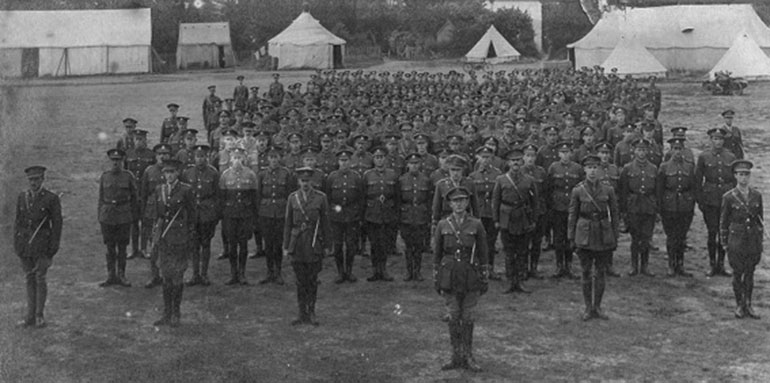NEWS FEED

One hundred years since his death in the first tank attack in history, a search has been started for the descendants of a young Poole hero.
Gunner Cyril William Coles was killed in action at The Somme when his tank engaged the enemy on 15 September 1916. He survived the tank being hit but he climbed out straight into the sights of German machine gunners.
After being killed, his remains were interred next to the disabled tank and following the Armistice, they were relocated to the Bull Road cemetery to the east of Flers.
A chance discovery in a church revealed his identity and a century later, his story is being told at The Tank Museum in Bovington, Dorset.
Melissa Lambert, the sister of the museum’s exhibitions manager Sarah Lambert, spotted a photo and plaque in Coles’ memory at Skinner Street United Reformed Church in Poole. The caption read: “Cyril Coles who was killed in the first tank attack near Flers September 15th 1916. Aged 23 years.”
It prompted museum staff to research Coles’ life and they discovered he was born at Canford in 1893. He was the son of a corn miller and was working with his father at Creekmoor Mill in 1911. Coles undertook just five months of training before travelling to France in August 1916 where he formed one of the eight-man crew of tank D15.
He was also identified in one of the first group photographs of tank crewmen and after further research, the museum identified which tank he served in at Flers and what happened to him and the crew.
His brother, Donald Coles, named his only son after him in 1925 keeping Cyril’s memory alive. However staff have been unable to trace the family further and are appealing for any descendants to get in touch.
David Willey, the tank museum’s curator, said: “We knew that a Cyril Coles was killed on the very first day that tanks ever went into battle. But finding such a personal story practically on our doorstep was a complete coincidence.
“For our centenary exhibition we identified eight of the first tank men, some of whom took part in the first ever action, and Cyril Coles is one of two who didn’t survive the war. He was one of the very first tank crewmen to be killed and 100 years on it would be wonderful to make contact with his family.
“We’re in touch with the families of several of those who took part, but would love to find the relatives of Cyril, especially as he was local.”
He added: “Like so many names on First World War memorials we all pass by without a second thought, Cyril was until recently just another anonymous casualty of a war fought long ago. But now we know he was one of that small group of men who were pioneers of tank warfare and was inside one on the very first day they rolled towards the German trenches.
“We know that his tank D15 was hit and disabled by artillery and that as he climbed out to escape along with his fellow gunner they were both cut down by German machine gunners. The remaining men in the crew escaped with injuries.
“One hundred years later we feel it is important to remember these brave men and we’re pleased to have been able to bring Cyril Coles to people’s attention with our exhibition.”
To mark the centenary the museum is taking a replica of a World War One tank – that was made for the film War Horse – to Trafalgar Square on 15 September.







